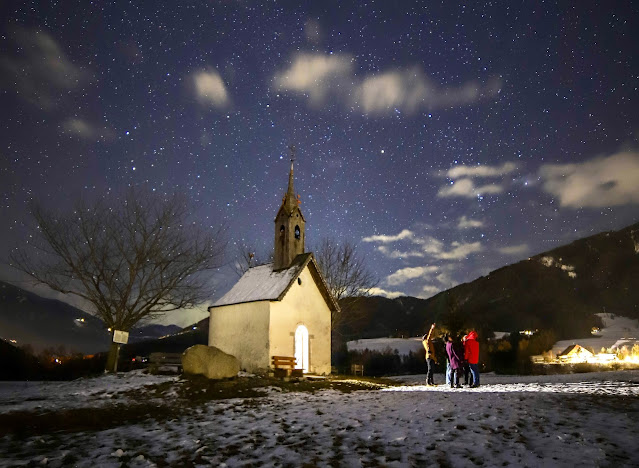A search for faint asteroids

tl;dr - A teacher and two teenagers drive up to an observatory with a 16-inch telescope at 1,600 m in South Tyrol on a clear December night. The plan is to discover faint asteroids with the so-called “blink” method. Despite several obstacles, as a snowstorm of hotpixels and a merciless ski-slope light dome, they come away with ~ 3x15 faint asteroids (and one interesting variable star). Here’s the full story! On 28 December 2024 the sky was clad in a perfect winter blue, and two of my students — Emma (15) and Miriam (17) — despite being in the midst of winter holidays, agreed to an observing night at our school's rooftop roll-off observatory. Ready to hunt down asteroids. Our 16-inch RC telescope. The evening started promisingly: While we set up our equipment the air smelled cold and clear. Then however, the village below started their night-skiing and a gruesome light dome devoured all faint stars in the southeast. We had no other option but to postpone plan A (our ast...





